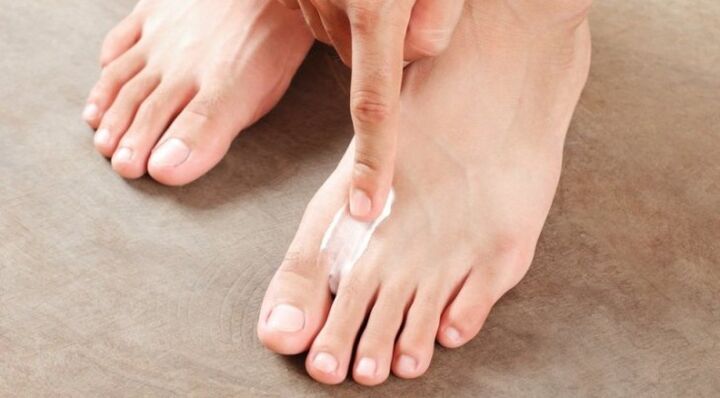Unbearable itching and redness of the skin between the toes, cutting pains when walking are the first symptoms of the most common dermatological problem - fungal skin lesions. Germinating through the delicate epithelium of the skin, the mycelium of the fungus gradually "spreads" over the entire plantar surface of the feet, causing unpleasant wet and flaky areas, painful cracks and deformation of the nails.

Malignant fungi and related factors
The causative agent of the disease are dermatomycete fungi, among which the genus Trichophyton is considered the most common. They live almost everywhere - in swimming pools and on beaches, in people's shoes and on animal hair, but the disease is not always provoked. An important factor is the creation of an infectious neck through which the dermatomycete can penetrate to a sufficient depth.
Fungus between the toes occurs when the skin's barrier functions are weakened:
- When wearing tight, closed shoes. This is especially true during the hot season, when the sweat creates conditions for maceration of the skin, becomes a habitat for many microorganisms.
- Abrasions and scratches are ready gates for fungi to enter. If you have them, you should not risk trying on someone else's shoes on your bare feet, walking barefoot in the pool, sauna and steam bath.
- An effective remedy against fungus on the feet between the toes should be sought from lovers of cheap pedicures in salons with dubious fame. The procedure itself involves cutting the cuticles and rubbing the skin, and non-sterile instruments can be "enriched" with fungus.
Fungus between the toes: symptoms and complications
What the fungus looks like between the toes can not be described unambiguously, as the disease has several forms, each of which is characterized by special manifestations:
- Dyshydrotic fungus on the feet is characterized by three stages - redness, blistering and drying crusts, peeling. As a rule, all three phases coexist on the same areas of the skin. The insidiousness of the dyshidrotic form of dermatomycosis lies in its great resemblance to eczema. A laboratory smear test is required for an accurate diagnosis.
- The squamous form is characterized by redness and severe peeling of the skin.
- The squamous-hyperkeratotic lesion causes severe itching and burning, and seals and flakes appear a little later.
- In the intertriginous form, the manifestations are so typical that you do not even need to look at what the fungus looks like between the toes in the photo: severe itching, burning accompanied by peeling and the formation of painful cracks and quite large foci of epidermal exfoliation often appear.
- Intertriginous and dyshidrotic forms of dermatomycosis require caution and delicate methods of treatment, as the secondary microflora can easily penetrate weeping foci and cracks, which will lead to the appearance of abscesses. Despite the chronic course, they have pronounced inflammatory processes, which requires the use of emollient ointments and anti-inflammatory baths.
Medication treatment
In the arsenal of modern medicine there are a number of drugs for the treatment of fungus between the toes. Among them are both topical ointments and tablets that destroy the fungus from within. As a rule, a specialist chooses a drug based on an analysis of the degree of development of the disease, its form and coverage. Systemic therapy with the help of pills is used only in advanced cases, when the skin of the whole foot is involved in the process and characteristic changes in the nail plates are detected.
Antifungal ointments have been divided for several generations. But it should be understood that even the most effective remedy against fungus between the toes does not guarantee disposal if you ignore the rules of personal hygiene and a number of precautions.
During treatment, a gentle pedicure should be done at least once a week. Subsequently, the frequency can be reduced to once every two weeks.
Since the fungus can survive on socks and shoes, they also need to be treated. To do this, use liquids containing chlorine, such as bleach.
If you are thinking about how to get rid of fungus between your toes, be sure to change your socks every day. For two or three days in a row, wearing clothes already retains traces of the sweat in which the parasites live and multiply.
Only a combination of a course of therapy chosen by a specialist and careful observance of all hygiene rules can guarantee a speedy recovery from the disease.
Treatment of fungus between the toes with folk remedies
Traditional medicine has collected many recipes to combat the fungus, including both products from kitchen cabinets and many exotic herbs and medicines. The most accessible among them are:
- Iodine, daily lubrication of lesions, which brings visible results for a week.
- Hydrogen peroxide, which gained popularity thanks to the works of a famous doctor. Its ability to destroy the cell membranes of the fungus and to form a film on the surface of damaged skin ensures rapid relief from the disease.
If you have spent a lot of money and are thinking about how to treat the fungus between the toes, then you should also try the effect of vinegar. Despite the fungus living in a slightly acidic environment, it does not tolerate rising pH. Lubricating the affected areas with a solution of 9% vinegar and water in a ratio of 1: 8 gives positive results within 2-3 weeks.
The most popular remedies in folk medicine - onions and garlic - also have an antifungal effect. The prepared porridge is mixed with Vaseline in a ratio of 1: 1 and applied to the affected skin before bedtime.
You have not decided how to treat the fungus on the feet between the toes, do not forget about its destruction on shoes and personal hygiene items. This is what guarantees the absence of recurrences in the very near future.





























